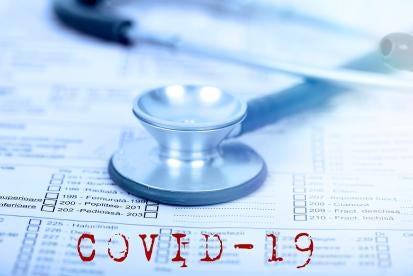A few short weeks ago we told you in a blog post that, with only four days’ notice, the Departments of Labor, Treasury, and HHS (the Departments) required that, starting January 15, 2022, group health plans cover FDA-approved over-the-counter (OTC) at-home COVID-19 tests without participant cost-sharing, preauthorization, or medical management, regardless of whether a health care provider was involved in ordering the test. For many employers and plan administrators, the last three weeks have been a blur of frenzied planning to ensure compliance with the new coverage mandate, which was set forth in the Departments’ FAQs Part 51.
Well, buckle up, because the fun continues. On Friday, February 4, 2022, in response to stakeholder feedback, the Departments released—you guessed it—FAQs Part 52, which clarifies their prior guidance on the new coverage requirements.
The core coverage mandate described in FAQs Part 51 has not changed—plans are still required to cover, without participant cost-sharing, preauthorization, or medical management, at least eight FDA-approved OTC at-home COVID-19 tests per 30-day period per covered individual without a prescription or individualized clinical assessment.
What has changed is that the new guidance provides some additional flexibility for plans trying to meet the “safe harbor” that allows them to limit reimbursement to $12 per test (or, the cost of the test, if less) for tests purchased from non-network providers. The new guidance also answers a number of stakeholder questions about the coverage mandate outlined in FAQs Part 51.
Background
In FAQs Part 51, the Departments announced a non-enforcement “safe harbor” for reimbursement limits on at-home COVID-19 tests obtained from non-network providers. Under this limited non-enforcement policy, plans could, under certain circumstances, limit the amount reimbursed for at-home COVID-19 tests obtained from non-network retailers to the lesser of $12 per test or the actual test cost.
To rely on this “$12 safe harbor,” plans were required to make direct coverage of at-home tests available without any up-front costs to participants through: (1) the plan’s network of preferred providers, and (2) a direct-to-consumer shipping program. Reliance on this safe harbor also required that participants have “adequate access” to tests through the direct coverage program.
Many plans struggled to comply with this safe harbor on short notice, in particular the requirement to establish a direct-to-consumer shipping program. More difficult yet was managing the requirement that the safe harbor would apply only for periods during which participants had “adequate access” to tests—a difficult-to-measure directive, especially given recent test scarcity.
In light of these concerns, the Departments modified this safe harbor to ensure that plans have “significant flexibility” in meeting these requirements.
Modifications to the $12 Safe Harbor Rule
While the $12 safe harbor rule is generally maintained, the Departments have liberalized the rule in a number of ways. These changes, which are effective February 4, 2022, include, for example, the following:
-
The safe harbor’s requirement that the direct coverage program provide “adequate access” (based on facts and circumstances) generally requires that tests must be made available through at least one direct-to-consumer shipping mechanism and at least one in-person mechanism. However, the new guidance recognizes that, in “limited circumstances,” a plan could satisfy the “adequate access” standard without establishing both in-person and direct-to-consumer shipping mechanisms.
Proskauer Perspective: As an example of these limited circumstances, the Departments said that a small employer plan with employees who live and work in a localized area may satisfy the adequate access requirement if the plan has in-person distribution of at-home COVID-19 tests at a nearby location, without anything else. This logic should theoretically extend even to plans with a geographically diverse population as long as the in-person network is very broad. However, in view of the Departments’ description of this exception as being “limited” and the language about the rule “generally” requiring both options, we suspect that the Departments might conclude that a plan with a geographically diverse population needs to have both in-person and direct-to-consumer shipping options if it wishes to rely on the $12 safe harbor.
-
The guidance contains a broad definition of “direct-to-consumer shipping mechanism,” stating that it includes any program that provides direct coverage of tests without requiring the individual to obtain the test at an in-person location. This includes online or telephone ordering and may be provided through a pharmacy or other retailer, the plan directly, or any other entity on behalf of the plan. The guidance clarifies that if the plan has opted to provide in-person coverage through a preferred retailer that also maintains an online website that will ship tests directly to participants, the website should be sufficient to meet the direct-to-consumer shipping requirement.
Proskauer Perspective: In theory, permitting plan sponsors the flexibility to rely on the retail location’s website as the direct shipping option should make it easier for many plans to meet the safe harbor. The devil, of course, is in the details, as participants will need to be able to order the tests on the retail online platform without any upfront cost to the participant—which may not be a website feature that is easy for group health plan sponsors and/or pharmacy benefit managers to “turn on” for participants.
-
A direct coverage program may still satisfy the adequate access requirement even if it does not cover all FDA-approved at-home COVID-19 tests. The guidance states, for example, that, depending on the facts and circumstances, a plan may be able to limit its direct coverage program to tests from a limited number of manufacturers, such as those with which the plan has a contractual relationship or from which the plan obtained the tests directly.
Proskauer Perspective: On paper, this would seem to permit plans to limit direct coverage of at-home COVID-19 tests by brand or type. However, the guidance suggests that taking this approach requires that the plan itself have a contractual relationship with the test manufacturer or that the plan obtain the tests directly from the test manufacturer. While one would imagine that this was not intended to exclude situations in which a self-insured plan’s third party administrator or pharmacy benefit manager—rather than the plan itself—has the arrangement with the manufacturer, the language of the guidance leaves some ambiguity in that regard. Plans utilizing this special rule should also remember to inform participants of any limitations they will impose in this regard. Plans should also keep in mind that this special rule relates only to the direct coverage option—the plan would still have to reimburse participants for the cost of other covered tests.
-
The new guidance clarifies that, provided the plan has established a direct coverage program that is designed to meet the $12 safe harbor, the fact that the plan is “temporarily” unable to provide tests through the program as a result of a supply shortage does not disqualify it from relying on the $12 safe harbor during that time.
Proskauer Perspective: This addressed the concern of some plan sponsors that they would be not be able to use the $12 safe harbor if participants were unable to obtain tests given the supply shortage.
-
As part of the direct shipping-to-consumer option, a plan must also cover the reasonable shipping costs (in a manner consistent with other items provided by the plan via mail order). Shipping costs (and taxes) are included in the $12 reimbursement limit for tests purchased from non-network providers.
Fraud and Abuse
The new guidance adds a number of steps that a plan may take to limit or discourage fraudulent behavior. These include disallowing reimbursement for tests that are purchased online via direct person-to-person transactions, as well as from sellers that use online auction or resale marketplaces. Plans may also limit reimbursements to tests purchased from established retailers that would typically be expected to sell the tests. In all instances, plans may also require reasonable proof of purchase identifying the product and seller, original receipts, or other documentation to verify that the purchase qualifies for coverage.
Proskauer Perspective: The prior guidance provided very little latitude for plans to combat fraud and abuse. As a result, some stakeholders had expressed concern that participants would turn to unregulated online resellers (e.g., EBay, Craigslist, Facebook Marketplace, or Amazon third-party resellers) to purchase tests at much higher prices than from established retail partners. The new guidance is welcome confirmation that reimbursement of tests purchased from such online resellers is not required, but plans should be sure to notify participants that they will not permit reimbursement of at-home COVID-19 tests from these resellers.
At-Home COVID-19 Tests Processed at a Laboratory
The guidance clarifies that the rules in FAQs Parts 51 and 52 apply to FDA-approved at-home COVID-19 tests that are authorized to be self-administered and self-read. They do not apply to at-home tests that require a laboratory or other healthcare provider to process the results. Those types of tests are subject to the general rules that apply to coverage for COVID-19 testing with the involvement of a healthcare provider.
Reimbursement from FSAs/HRAs/HSAs for At-Home COVID-19 Tests
Because major medical plans are now required to cover at-home COVID-19 tests without cost-sharing, participants cannot “double-dip” by claiming reimbursement from their health flexible spending account (FSA), health reimbursement account (HRA) or health savings account (HSA) and having their medical plan pay, or reimburse them, for the costs of at-home COVID-19 tests. If a participant mistakenly seeks reimbursement from his or her health FSA, HRA, or HSA for at-home COVID-19 tests that are later reimbursed from his or her major medical plan, he or she will need to correct the erroneous reimbursement or distribution in accordance with the plan administrator’s procedures (and, in the case of an HSA, the generally applicable HSA rules regarding non-qualified medical expenses).
Proskauer Perspective: Since at-home COVID-19 tests are reimbursable under FSAs, HRAs and HSAs, participants may have become accustomed to purchasing at-home COVID-19 tests in this way (for example, with a health FSA debit card). Plan administrators should consider reminding participants of this rule against “double-dipping” so they understand the new rules of the road.



 />i
/>i

